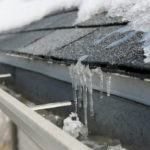
RCV vs. ACV: The Differences in Property Insurance Claims
As a homeowner or business owner, experiencing property damage can be stressful. It’s essential to clearly understand your insurance policy and the different types of coverage available for you to select from. When dealing with property insurance claims, insurers use two types of valuation methods: Replacement Cost Value (RCV) and Actual Cash Value (ACV).
Understanding the differences between these two policies can greatly affect the compensation you receive from your insurance company. In this article, we’ll explore the key differences between RCV and ACV and how they can impact your property insurance claim. Whether you’re dealing with water damage, fire damage, or any other type of property damage, this information will help you confidently navigate the claims process. What is RCV (Replacement Cost Value)?
Replacement Cost Value (RCV) is a valuation method used by insurance companies to calculate the cost of replacing damaged or destroyed property with a new one of similar kind and quality. In other words, RCV is the cost of rebuilding or repairing your property to its pre-loss condition without deducting any depreciation. This means you will get the full amount needed to repair or replace your property with new materials and equipment, regardless of its age or condition at the time of the loss.
For example, your home’s roof was damaged in a hailstorm. Replacing your roof with a new one of a similar kind and quality costs $10,000. If you have RCV coverage, your insurance company will pay the full $10,000, minus your deductible, regardless of the age or condition of your old roof.
What is ACV (Actual Cash Value)?
Actual Cash Value (ACV) is another valuation method insurance companies use to calculate the cost of replacing damaged or destroyed property. ACV considers the property’s age, condition, and depreciation at the time of the loss. You will receive your damaged property’s current market value minus depreciation.
For example, let’s say your 5-year-old laptop was stolen from your home. The cost of a new laptop of similar kind and quality is $1,000, but your old laptop has depreciated by 50% due to its age and condition. If you have ACV coverage, your insurance company will pay $500, minus your deductible, to replace your stolen laptop.
Key differences between RCV and ACV
The key difference between RCV and ACV is the compensation you get from your insurance company. RCV coverage provides total replacement cost without deducting depreciation, while ACV coverage provides the current market value of your damaged property minus depreciation. This means that RCV coverage is generally more expensive than ACV coverage because it provides more comprehensive protection.
Another difference is the calculation of depreciation. RCV coverage does not take into account depreciation, while ACV coverage does. This means that if you have ACV coverage, you will receive less compensation for your damaged property than if you have RCV coverage.
How RCV and ACV affect property insurance claims

The type of coverage you have can significantly impact the amount of compensation you receive for your property insurance claim. If you have RCV coverage, you will receive the full cost of repairing or replacing your damaged property with new materials and equipment, regardless of its age or condition. This can be beneficial if you have high-value items or if your property is relatively new.
If you have ACV coverage, you will receive the current market value of your damaged property minus depreciation. This means that you may need more compensation to replace your damaged property fully, especially if it is old or in poor condition. This can result in out-of-pocket expenses or a lower-quality replacement.
Factors that affect RCV and ACV calculations
Several factors can affect the calculation of RCV and ACV, including the age and condition of the property, the cost of materials and labor, and local building codes and regulations. Insurance companies may also use different methods to calculate RCV and ACV, so reviewing your policy carefully and understanding how your insurance company determines these values is important.
Another important factor is your deductible. Your deductible is the amount you must pay out of pocket before your insurance company will pay for your claim. If you have a high deductible, you will pay less in premiums, but you will also be responsible for more out-of-pocket money if you need to file a claim.
Choosing the right coverage for your property
When choosing property insurance coverage, it’s important to consider your specific needs and risks. RCV coverage can provide more comprehensive protection but is also more expensive. ACV coverage can be more affordable, but more compensation may be needed to replace your damaged property fully.
It’s important to carefully read your policy and consider things such as the age and condition of your property, the value of your belongings, and your budget. Add endorsements or riders to your policy for additional protection, such as flood or earthquake insurance.
Tips for negotiating RCV and ACV claims
If you need to file a property insurance claim, there are several tips you can use to negotiate your compensation. First, make sure you have a good understanding of your policy and the coverage you have. Gather evidence of the damage, such as photographs and receipts, and document all communications with your insurance company.
If you have RCV coverage, ensure you provide estimates from reputable contractors for repairing or replacing your damaged property. If you have ACV coverage, provide evidence of the age and condition of your damaged property, such as receipts and inspection reports.
Finally, feel free to negotiate with your insurance company. If you feel that you are not being offered fair compensation, you can hire a public adjuster or an attorney to help you negotiate a better settlement.
Common misconceptions about RCV and ACV
Several common misconceptions about RCV and ACV can lead to confusion or frustration during the claims process. One of the most common misconceptions is that RCV coverage will provide full replacement costs for all types of property damage. In reality, RCV coverage may have limits or exclusions for certain types of damage, such as flood or mold damage.
Another common misconception is that ACV coverage is always cheaper than RCV coverage. While ACV coverage may have lower premiums, it may also result in higher out-of-pocket expenses if you need to file a claim.
Conclusion
Understanding the differences between RCV and ACV is essential for confidently navigating the property insurance claims process. RCV coverage provides full replacement costs without deducting depreciation. In contrast, ACV coverage provides the current market value of your damaged property minus depreciation.



